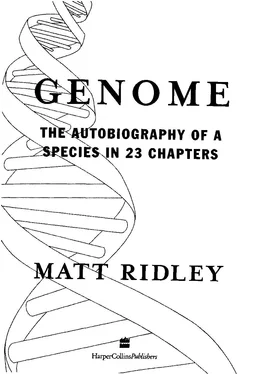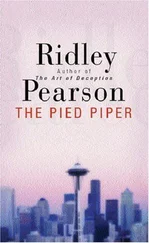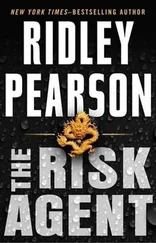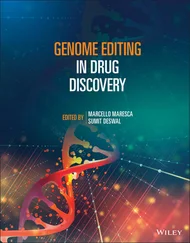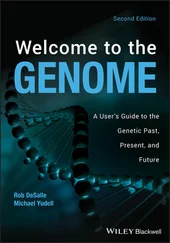Genome - Matt Ridley
Здесь есть возможность читать онлайн «Genome - Matt Ridley» — ознакомительный отрывок электронной книги совершенно бесплатно, а после прочтения отрывка купить полную версию. В некоторых случаях можно слушать аудио, скачать через торрент в формате fb2 и присутствует краткое содержание. Жанр: Старинная литература, на английском языке. Описание произведения, (предисловие) а так же отзывы посетителей доступны на портале библиотеки ЛибКат.
- Название:Matt Ridley
- Автор:
- Жанр:
- Год:неизвестен
- ISBN:нет данных
- Рейтинг книги:5 / 5. Голосов: 1
-
Избранное:Добавить в избранное
- Отзывы:
-
Ваша оценка:
- 100
- 1
- 2
- 3
- 4
- 5
Matt Ridley: краткое содержание, описание и аннотация
Предлагаем к чтению аннотацию, описание, краткое содержание или предисловие (зависит от того, что написал сам автор книги «Matt Ridley»). Если вы не нашли необходимую информацию о книге — напишите в комментариях, мы постараемся отыскать её.
Matt Ridley — читать онлайн ознакомительный отрывок
Ниже представлен текст книги, разбитый по страницам. Система сохранения места последней прочитанной страницы, позволяет с удобством читать онлайн бесплатно книгу «Matt Ridley», без необходимости каждый раз заново искать на чём Вы остановились. Поставьте закладку, и сможете в любой момент перейти на страницу, на которой закончили чтение.
Интервал:
Закладка:
More romantically, the application of genetic fingerprinting to paternity testing has revolutionised our understanding of bird song.
Have you ever noticed that thrushes, robins and warblers continue singing long after they have paired up in spring? This flies in the face of the conventional notion that bird song's principal function is the attraction of a mate. Biologists began DNA-testing birds in the late 1980s, trying to determine which male had fathered which chicks in each nest. They discovered, to their surprise, that in the most monogamous of birds, where just one male and one female faithfully help each other to rear the brood, the female's mate quite often with neighbouring males other than their ostensible 'spouses'.
Cuckoldry and infidelity are much, much commoner than anybody expected (because they are committed in great secrecy). D N A fingerprinting led to an explosion of research into a richly rewarding theory known as sperm competition, which can "explain such trivia as the fact that chimpanzee testicles are four times the size of gorilla testicles, even though chimpanzees are one-quarter the size of gorillas. Male gorillas monopolise their mates, so their sperm meets no competitors; male chimpanzees share their mates, so each needs to produce large quantities of sperm and mate frequently to increase his chances of being the father. It also explains why male birds sing so hard when already 'married'. They are looking for
'affairs'.10
C H R O M O S O M E 9
D i s e a s e
A desperate disease requires a dangerous remedy.
Guy Fawkes
On chromosome 9 lies a very well-known gene: the gene that determines your ABO blood group. Since long before there was D N A fingerprinting, blood groups have appeared in court.
Occasionally, the police get lucky and match the blood of the criminal to blood found at the scene of the crime. Blood grouping presumes innocence. That is to say, a negative result can prove you were not the murderer absolutely, but a positive one can only suggest that you might be the murderer.
Not that this logic had much impact on the California Supreme Court, which in 1946 ruled that Charlie Chaplin was most definitely the father of a certain child despite unambiguous proof from the incompatibility of their blood groups that he could not have been.
But then judges were never very good at science. In paternity suits as well as murder cases, blood grouping, like genetic fingerprinting, or indeed fingerprinting, is the friend of the innocent. In the days of D N A fingerprinting, blood-group forensics is redundant. Blood D I S E A S E 137
groups are much more important in transfusion, though again in a wholly negative way: receiving the wrong blood can be fatal. And blood groups can give us insights into the history of human migrations, though once more they have been almost entirely superseded in this role by other genes. So you might think blood groups are rather dull. You would be wrong. Since 1990 they have found an entirely new role: they promise understanding of how and why our genes are all so different. They hold the key to human polymorphism.
The first and best known of the blood group systems is the A B O
system. First discovered in 1900, this system originally had three different names with confusing consequences: type I blood, according to Moss's nomenclature was the same as type IV blood according to Jansky's nomenclature. Sanity gradually prevailed and the nomenclature adopted by the Viennese discoverer of the blood groups became universal: A, B, AB and O. Karl Landsteiner expressively described the disaster that befell a wrong transfusion thus: 'lytischen und agglutinierenden Wirkungen des Blutserums'. The red cells all stick together. But the relation between the blood groups was not simple. People with type A blood could safely donate to those with A or A B ; those with B could donate to those with B and A B ; those with AB could donate only to those with A B ; and those with O blood could donate to anybody - O is therefore known as the universal donor. Nor was there any obvious geographic or racial reason underlying the different types. Roughly forty per cent of Europeans have type O blood, forty per cent have type A blood, fifteen per cent have type B blood and five per cent have type AB
blood. The proportions are similar in other continents, with the marked exception of the Americas, where the native American population was almost exclusively type O, save for some Canadian tribes, who were very often type A, and Eskimos, who were sometimes type AB or B.
It was not until the 1920s that the genetics of the A B O blood groups fell into place, and not until 1990 that the gene involved came to light. A and B are 'co-dominant' versions of the same gene, O being the 'recessive' form of it. The gene lies on chromosome I 3 8 G E N O M E
9, near the end of the long arm. Its text is 1,062 'letters' long, divided into six short and one long exons ('paragraphs') scattered over several 'pages' - 18,000 letters in all — of the chromosome. It is a medium-sized gene, then, interrupted by five longish introns. The gene is the recipe for galactosyl transferase,1 an enzyme, i.e. a protein with the ability to catalyse a chemical reaction.
The difference between the A gene and the B gene is seven letters out of 1,062, of which three are synonymous or silent: that is, they make no difference to the amino acid chosen in the protein chain.
The four that matter are letters 523, 700, 793 and 800. In people with type A blood these letters read C, G, C, G. In people with type B blood they read G, A, A, C. There are other, rare differences.
A few people have some of the A letters and some of the B letters, and a rare version of the A type exists in which a letter is missing near the end. But these four little differences are sufficient to make the protein sufficiently different to cause an immune reaction to the wrong blood.2
The O group has just a single spelling change compared with A, but instead of a substitution of one letter for another, it is a deletion.
In people with type O blood, the 258th letter, which should read
'G', is missing altogether. The effect of this is far-reaching, because it causes what is known as a reading-shift or frame-shift mutation, which is far more consequential. (Recall that if Francis Crick's ingenious comma-free code of 1957 had been correct, reading-shift mutations would not have existed.) The genetic code is read in three-letter words and has no punctuation. An English sentence written in three-letter words might read something like: the fat cat sat top mat and big dog ran bit cat. Not exactly poetry, I admit, but it will do. Change one letter and it still makes fairly good sense: the fat xat sat top mat and big dog ran bit cat. But delete the same letter instead, and read the remaining letters in groups of three, and you render the whole sentence meaningless: the fat ats att opm ata ndb igd ogr anb itc at. This is what has happened to the A B O
gene in people with the O blood group. Because they lack just one letter fairly early in the message, the whole subsequent message says D I S E A S E 139
something completely different. A different protein is made with different properties. The chemical reaction is not catalysed.
This sounds drastic, but it appears to make no difference at all.
People with type O blood are not noticeably disadvantaged in any walk of life. They are not more likely to get cancer, be bad at sports, have little musical ability or something. In the heyday of eugenics, no politician called for the sterilisation of people with the O blood group. Indeed, the remarkable thing about blood groups, the thing that has made them so useful and so politically neutral, is that they seem to be completely invisible; they correlate with nothing.
Читать дальшеИнтервал:
Закладка:
Похожие книги на «Matt Ridley»
Представляем Вашему вниманию похожие книги на «Matt Ridley» списком для выбора. Мы отобрали схожую по названию и смыслу литературу в надежде предоставить читателям больше вариантов отыскать новые, интересные, ещё непрочитанные произведения.
Обсуждение, отзывы о книге «Matt Ridley» и просто собственные мнения читателей. Оставьте ваши комментарии, напишите, что Вы думаете о произведении, его смысле или главных героях. Укажите что конкретно понравилось, а что нет, и почему Вы так считаете.
